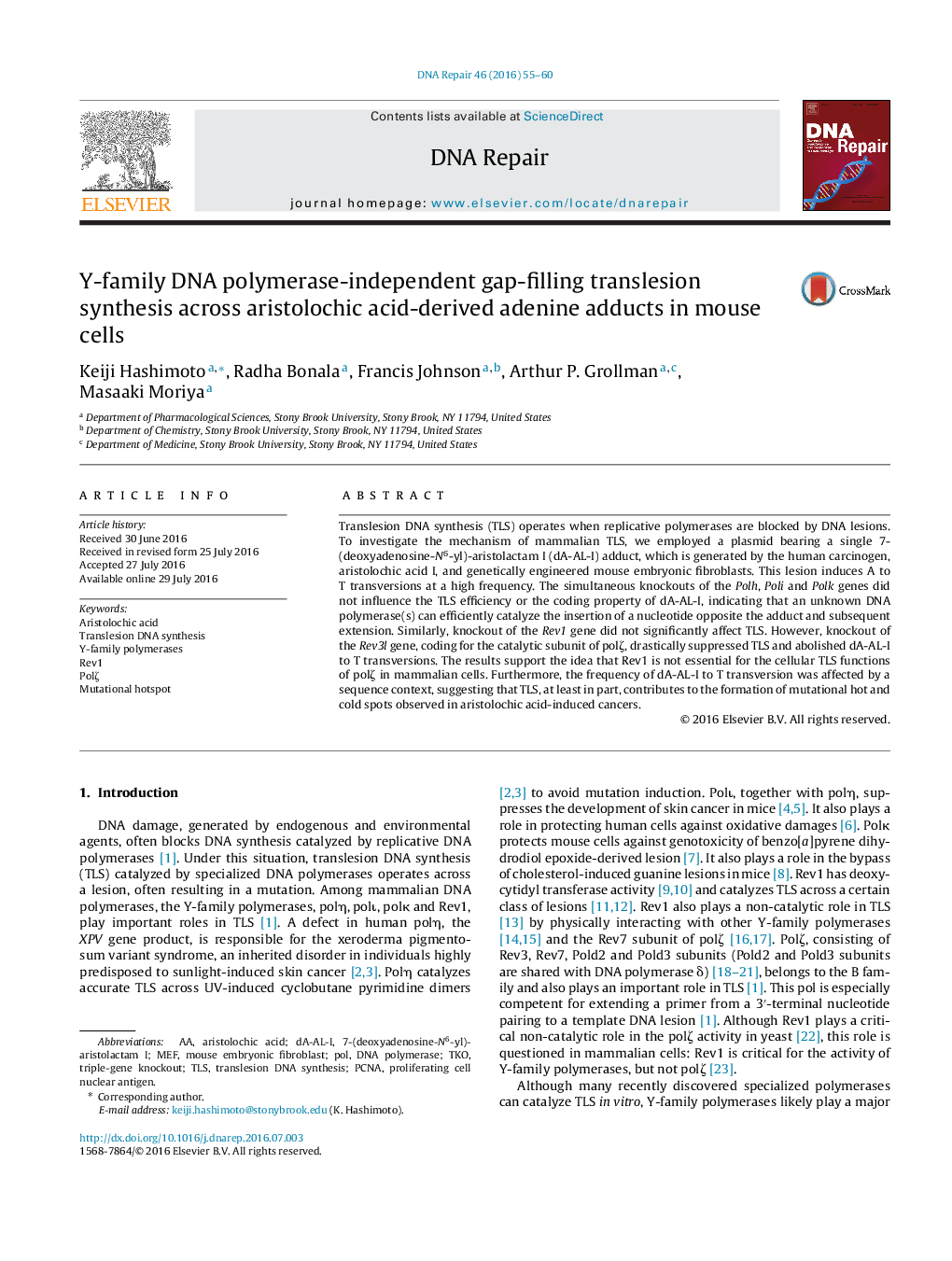| کد مقاله | کد نشریه | سال انتشار | مقاله انگلیسی | نسخه تمام متن |
|---|---|---|---|---|
| 5511057 | 1539382 | 2016 | 6 صفحه PDF | دانلود رایگان |

- The dA adduct of aristolochic acid I (dA-AL-I) causes A to T mutations at a high frequency.
- Y-family DNA polymerases are not essential for TLS across dA-AL-I.
- Polζ, but not Rev1, is indispensable for TLS and A to T transversions.
- TLS contributes in part to the formation of dA-AL-I-induced mutational hotspots.
Translesion DNA synthesis (TLS) operates when replicative polymerases are blocked by DNA lesions. To investigate the mechanism of mammalian TLS, we employed a plasmid bearing a single 7-(deoxyadenosine-N6-yl)-aristolactam I (dA-AL-I) adduct, which is generated by the human carcinogen, aristolochic acid I, and genetically engineered mouse embryonic fibroblasts. This lesion induces A to T transversions at a high frequency. The simultaneous knockouts of the Polh, Poli and Polk genes did not influence the TLS efficiency or the coding property of dA-AL-I, indicating that an unknown DNA polymerase(s) can efficiently catalyze the insertion of a nucleotide opposite the adduct and subsequent extension. Similarly, knockout of the Rev1 gene did not significantly affect TLS. However, knockout of the Rev3l gene, coding for the catalytic subunit of polζ, drastically suppressed TLS and abolished dA-AL-I to T transversions. The results support the idea that Rev1 is not essential for the cellular TLS functions of polζ in mammalian cells. Furthermore, the frequency of dA-AL-I to T transversion was affected by a sequence context, suggesting that TLS, at least in part, contributes to the formation of mutational hot and cold spots observed in aristolochic acid-induced cancers.
Journal: DNA Repair - Volume 46, October 2016, Pages 55-60